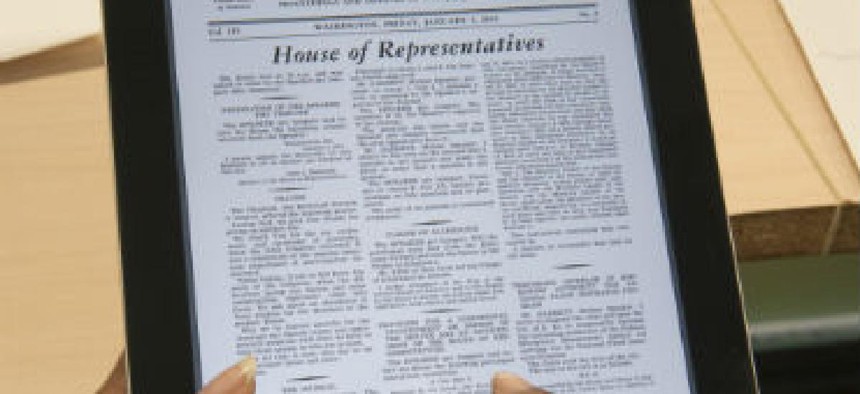GPO plunges into digital future

The head of the Government Printing Office outlines a strategy to take the 'print' out of GPO.

Facing shrinking budgets and decreasing demand for hard-copy publications, the Government Printing Office is continuing its transformation from a print-based document distributor into a digital repository of government information.
Public Printer Davita Vance-Cooks, in her first congressional testimony since being sworn into office in August, outlined plans to accelerate that transformation at a Dec. 3 hearing of the Committee on House Administration.
GPO, Vance-Cooks said, "is now fundamentally different from what it was as recently as a generation ago: smaller, leaner and equipped with digital production capabilities that are the bedrock of the information systems relied upon daily by Congress, federal agencies, and the public to ensure open and transparent government in the digital era."
The move away from labor-intensive printing practices has resulted in a dramatic reduction in the GPO workforce -- from a high of 6,500 employees in the 1980s to about 1,900 today, a reduction of 70 percent. More job cuts, either by attrition or buyouts, could be in the offing.
"Considering the fact that the GPO is undergoing a digital transformation, one in which technology will play a critical role, we believe that it [is] an indicator that we may eventually have to right-size again," Vance-Cooks said. In addition, GPO will be seeking employees with skills in developing digital products and managing online publishing tools.
According to a report from the National Academy of Public Administration, GPO is at risk of running out of money by 2020. The agency is run essentially like a business, with just a small piece of its funding coming from appropriations.
"GPO will need to continue to be aggressive in taking action given that its own analysis, based on a conservative set of assumptions, shows that it only has the cash necessary to offset operating losses and fund modest investment for another seven years," said Marilu Goodyear, a NAPA fellow, in prepared testimony submitted to the committee. "This provides the agency with a narrow window of opportunity to continue to expand business lines and maintain financial health into the next decade."
Vance-Cooks said the NAPA projections were based on worst-case scenarios and that the agency has taken many steps to prevent deficits, including raising the rates charged to government customers. "We're not going to run out of money," she said.
Currently, GPO generates a lot of its revenue from the production of passports, and it is increasingly involved in manufacturing secure employee IDs for government agencies. GPO officials are also looking into hosting archives as a potential source of revenue. An offering called Enhanced Electronic Content Services moves agency material into GPO’s Federal Digital System and renders the material searchable by keyword and metadata. Such digital preservation is likely to be of growing importance to agencies as more and more documents are created, distributed and stored exclusively online.
One of Vance-Cooks' priorities is changing the name of the agency to the Government Publishing Office as the reference to print becomes increasingly outdated. Rep. Candice Miller (R-Mich.), chairwoman of the Committee on House Administration, agreed that the name should be changed but said Vance-Cooks' idea "doesn't seem like enough to me." Miller suggested having a contest among GPO's employees to come up with a more inventive name.
NEXT STORY: Obama appoints acting deputy Defense secretary






